
Ad Testing and Creative Evaluation: Ensuring Audience Connection
How do you know if your ads will work before you launch them? In the crowded world of advertising, making sure your ads connect with your audience is key. This is where ad testing and creative evaluation come in. These processes help marketers understand if their ads are effective and resonate with their target audience. By gathering feedback, marketers can make changes to improve their ads before they are seen by a larger audience.
What is Ad Testing?
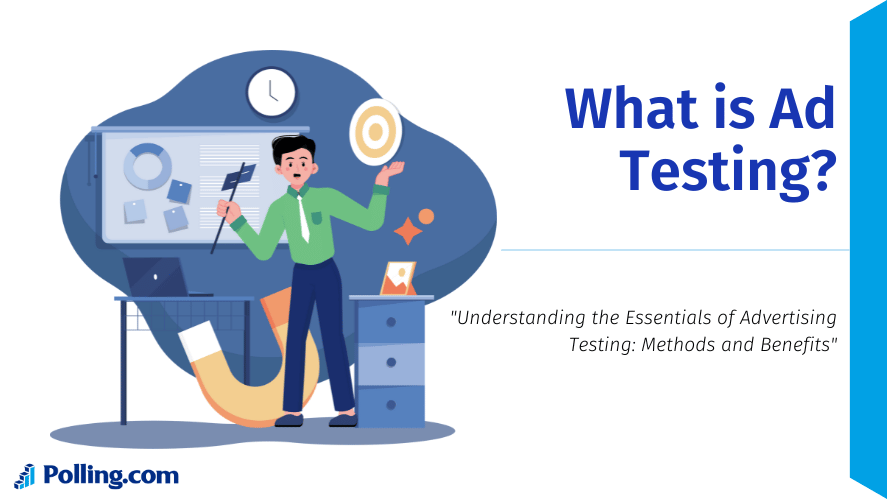
Ad testing is an important part of any advertising strategy. Let’s break down what it is, why it’s important, and the different types of ad testing that marketers use.
Definition and Purpose
Ad testing means checking how well an advertisement will perform before it goes live. The main goal is to see if the ad communicates the right message and engages the audience. Marketers can find out what parts of the ad work well and what parts need improvement. Moreover, ad testing helps prevent wasting time and money on ineffective ads.
Why Ad Testing is Important
Ad testing helps ensure that your ad will be successful once it reaches the public. It provides insights into how the audience will react to the ad, allowing marketers to make necessary adjustments. Additionally, ad testing can highlight elements that resonate with the audience, helping to focus on these aspects. By understanding audience reactions early, companies can avoid costly mistakes.
Different Types of Ad Testing
There are several methods used in ad testing, each serving a unique purpose. By understanding these types, marketers can choose the best approach for their needs.
- A/B Testing: This involves creating two different versions of an ad and showing them to different groups of people. The objective is to determine which version yields superior results. For example, one ad might have a different headline or image than the other. By comparing results, marketers can choose the best version. Furthermore, A/B testing allows marketers to make small tweaks and see which ones lead to better results.
- Concept Testing: Before creating a full ad, marketers can test different ideas or concepts. They present these ideas to a sample audience to see which one they like the most. This helps ensure that the final ad will appeal to the target audience. Additionally, concept testing saves time and resources by focusing on ideas that show the most promise.
- In-Market Testing: This type of testing involves launching the ad to a small group of people before a full launch. This helps marketers see how the ad performs in a real-world setting. Based on the feedback, they can make adjustments before showing the ad to a larger audience. In-market testing also helps in understanding actual consumer behavior, which is critical for refining the campaign.
Key Metrics to Consider
To measure how well an ad performs, marketers look at several key metrics. These metrics help them understand different aspects of the ad’s effectiveness.
- Brand Recall: This measures how well people remember the brand after seeing the ad. If people can recall the brand easily, it means the ad made a strong impression. High brand recall is often linked to increased brand loyalty and recognition.
- Message Comprehension: It’s important that people understand the main message of the ad. This metric checks if the audience gets the message the ad is trying to convey. Clear message comprehension ensures that the ad’s objectives are being met.
- Emotional Impact: Ads that evoke strong emotions are more memorable. This metric measures how much the ad makes people feel something, like happiness or excitement. Emotional impact often leads to better engagement and can drive word-of-mouth.
- Purchase Intent: This metric shows how likely people are to buy the product after seeing the ad. High purchase intent means the ad is effective in convincing people to make a purchase. This metric is directly related to the ad’s success in driving sales.
What is Creative Evaluation?
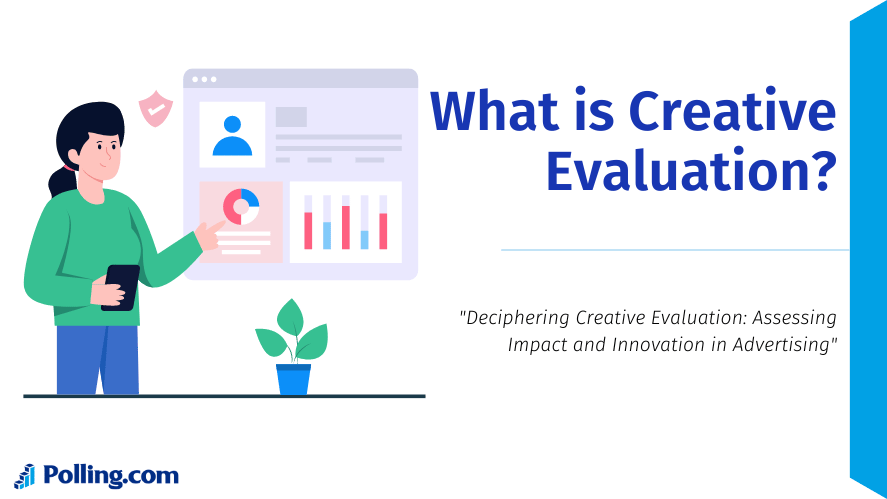
Definition and Role
Creative evaluation is all about assessing the creative elements of an ad. This includes looking at visuals, text, and the overall idea. The goal is to make sure these elements are interesting and connect with the audience. Creative evaluation ensures that the ad’s design and messaging are aligned with the brand’s goals and appeal to the target market.
Components of Creative Evaluation
During creative evaluation, marketers assess several key components to ensure the ad is engaging and effective.
- Imagery: This refers to the pictures, graphics, and colors used in the ad. Good imagery catches people’s attention and supports the message of the ad. It’s important that the imagery is visually appealing and relevant to the product or service being advertised.
- Copy: The words used in the ad are known as the copy. Effective copy is clear, engaging, and delivers the message in a way that speaks to the audience. Good copywriting can turn a simple message into a compelling call to action.
- Tone: The tone of an ad sets the mood. Whether it’s funny, serious, or inspirational, the tone should match the brand’s personality and the ad’s message. Consistent tone helps build a strong brand identity and can influence how the audience feels about the brand.
- Call-to-Action (CTA): A CTA tells people what to do next, such as “Buy Now” or “Learn More.” A strong CTA encourages people to take action after seeing the ad. An effective CTA can significantly boost the ad’s conversion rates.
Techniques for Creative Evaluation
There are various techniques used to gather feedback on the creative aspects of an advertisement. These methods help marketers understand how different creative elements are received by the audience.
- Focus Groups: Small groups of people are brought together to discuss their thoughts about an ad. This provides deep insights into how different people feel about the creative aspects of the ad. Focus groups allow for open discussion, which can reveal hidden insights.
- Online Surveys: Surveys are sent to a larger audience to gather feedback on the ad’s creative elements. They are a quick and easy way to collect opinions from many people. Internet-based surveys are economical and capable of engaging a broad audience.
- Eye-Tracking Studies: This technology tracks where people look when they see an ad. It helps marketers understand which parts of the ad attract the most attention. Eye-tracking studies provide objective data on visual engagement and can highlight areas for improvement.
How Ad Testing and Creative Evaluation Surveys Work

Surveys play a crucial role in both ad testing and creative evaluation. Let’s look at how these surveys are designed and used to gather valuable feedback.
Survey Design and Implementation
Creating effective surveys involves several steps, each of which is crucial to gathering useful feedback.
- Choosing the Target Audience: It’s important to select a group of people who represent the larger target audience. This ensures the feedback is relevant. A well-chosen audience provides insights that are applicable to the wider market.
- Framing Questions: Questions should be clear and to the point. Good questions help gather useful insights. For instance, rather than inquiring, ‘What is your opinion on the advertisement?” ask “What part of the ad did you like the most?” This makes it easier to gather specific feedback.
- Selecting the Survey Format: Surveys can be conducted online, in person, or through mobile apps. Choosing the right format makes it easier to reach and engage the audience. Different formats may be more effective for different types of audiences.
Data Collection and Analysis
Once the survey is designed, the next step is to collect responses. This can be done through emails, social media, or other platforms. The method of distribution can affect the response rate, so it’s important to choose the right channels. After collecting the data, analyzing it helps find patterns and insights that can improve the ad. The analysis should focus on identifying key trends and feedback that can guide the creative process.
Interpreting Results
Interpreting survey results involves looking at both numbers and written feedback. It’s important to identify common themes and understand what elements of the ad are working and what needs to be improved. Aligning these insights with the goals of the campaign helps make informed decisions. Effective interpretation of results can lead to significant improvements in ad performance.
Benefits of Ad Testing and Creative Evaluation Surveys
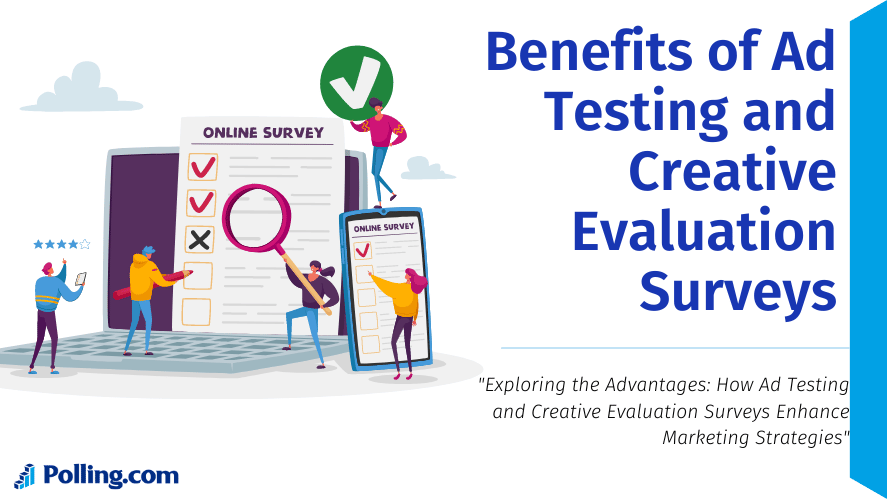
Ad testing and creative evaluation offer numerous benefits that can significantly enhance the effectiveness of advertising campaigns.
Improving Ad Effectiveness
Ad testing and creative evaluation provide valuable insights that help marketers improve their ads. By understanding what works and what doesn’t, they can make changes that enhance the ad’s effectiveness. Continuous testing and evaluation lead to better-performing ads over time. As a result, marketers can create ads that are more engaging and relevant to their target audience.
Reducing Campaign Risks
Testing ads before launching them helps identify potential problems early. This reduces the risk of running an ineffective ad campaign, saving time and money. By catching issues early, marketers can avoid costly mistakes. Additionally, testing helps ensure that the ad will achieve its objectives, making the investment more secure.
Enhancing Audience Engagement
Ads that are tested and refined based on audience feedback are more likely to engage the audience. Engaging ads capture attention, evoke emotions, and encourage people to take action. High engagement leads to better brand recall and increased conversion rates. Furthermore, understanding what engages the audience can lead to more creative and impactful ad campaigns in the future.
Challenges in Ad Testing and Creative Evaluation
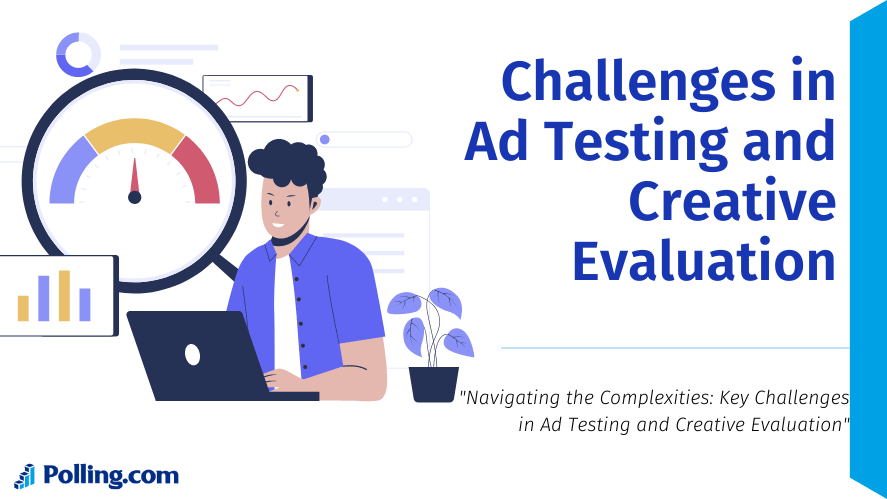
While ad testing and creative evaluation are powerful tools, they also come with challenges that marketers need to address.
Common Challenges
- Survey Bias: Bias can occur if the survey questions lead respondents to a certain answer or if the sample audience does not represent the larger target market. Avoiding bias is crucial for getting accurate results.
- Measuring Creative Impact: Creativity is often subjective, making it hard to measure its impact with numbers alone. Marketers need to find a balance between qualitative and quantitative feedback. Combining different methods can provide a more complete picture.
- Analyzing Subjective Data: Interpreting open-ended responses can be challenging and time-consuming. It requires skill to extract useful insights from written feedback. Advanced data analysis tools can help streamline this process.
Overcoming Challenges
To address these challenges, marketers can take several steps to improve the effectiveness of their ad testing and creative evaluation.
- Using Different Testing Methods: Combining various testing methods, like A/B testing and focus groups, can provide a more comprehensive view of an ad’s effectiveness. This helps in understanding different aspects of the ad.
- Ensuring Sample Diversity: Selecting a diverse audience for surveys helps reduce bias and ensures feedback is more representative. A diverse sample provides a broader range of insights.
- Using Advanced Tools: Technologies like AI can help analyze large amounts of data quickly and provide deeper insights into ad performance. Advanced tools make it easier to handle complex data sets.
Best Practices for Conducting Effective Surveys
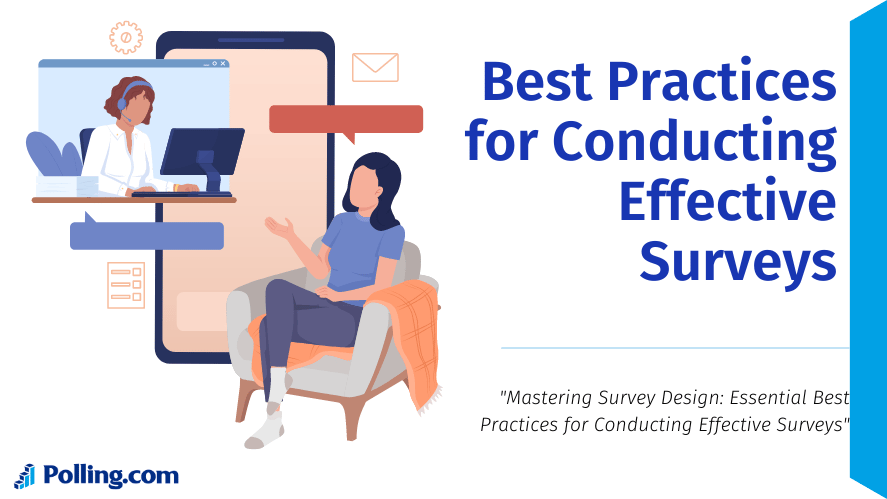
Following best practices can significantly improve the quality of insights gained from ad testing and creative evaluation surveys.
Choosing the Right Audience
Selecting a representative audience for surveys is crucial. The feedback will only be useful if it reflects the views of the people the ad is meant to reach. A well-chosen audience helps ensure the relevance of the feedback.
Crafting Effective Survey Questions
Good survey questions are clear, simple, and to the point. They should encourage honest and thoughtful responses. Open-ended questions can provide deeper insights, while closed-ended questions make it easier to analyze the data. A balance of both types of questions provides the best results.
Leveraging Technology and Tools
Using tools like online survey platforms and AI analytics can streamline the survey process. These tools make it easier to collect and analyze data, helping marketers make faster and better decisions. Technology can greatly enhance the efficiency and accuracy of surveys.
Case Studies and Real-World Examples
Real-world examples show how successful companies use ad testing and creative evaluation to create impactful ads.
Successful Ad Campaigns
- Coca-Cola’s “Share a Coke” Campaign: Coca-Cola replaced its logo with popular names on its bottles, encouraging people to find bottles with their names or their friends’ names. By testing this concept, Coca-Cola learned that personalization would engage people, leading to increased sales and brand interaction. This campaign showed the power of connecting with people on a personal level.
- Nike’s “Just Do It” Campaign: Before launching the famous slogan, Nike tested different messages. The testing revealed that “Just Do It” was the most motivating and inspiring, helping the brand connect with a wide range of people. This campaign highlighted the importance of a strong, simple message.
Lessons Learned
These examples show the importance of understanding what the audience wants and feels. By testing and refining their ads, Coca-Cola and Nike created campaigns that deeply connected with people, boosting their brands and sales. Thorough testing and evaluation provide the insights that build successful ad campaigns.
Conclusion
In today’s fast-paced advertising world, making sure your ads connect with your audience is more important than ever. Ad testing and creative evaluation are powerful tools that help marketers understand what works and what doesn’t. By using these tools, you can create ads that capture attention, engage viewers, and drive action.
Don’t leave your ad campaigns to chance. Start using ad testing and creative evaluation to ensure your ads resonate with your audience and achieve the best results.
Call to Action
Ready to improve your advertising strategy? Start incorporating ad testing and creative evaluation into your marketing plans today. Use these insights to create ads that not only capture attention but also drive real results. Take the first step towards more effective advertising now!
